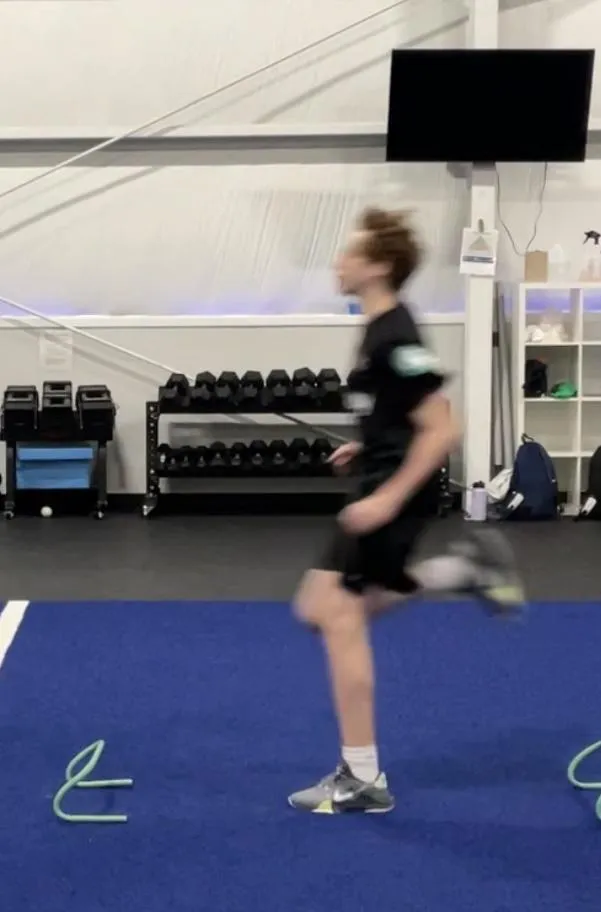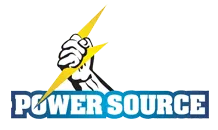ATHLETE BLOG LEOMINSTER

How We Improved Speed In An Athlete With Knee Pain
We've gotten a lot of requests lately about how to get faster while managing knee or foot pain.
Kids get fed up being repeatedly beat to the ball or puck.
Parents, watching it all play out from the stands, feel their child's frustration and want to help.
Yet it's a tricky balance, because true speed work puts extra stress on their achy knees and feet.
Far too often players try to work through it, using common tactics like icing or wearing a protective sleeve to hide the problem.
This may buy them a little time, but eventually the issue returns.
Not to mention, it does nothing to enhance speed.
Here's what should be happening instead.
First, their workload needs to be managed wisely.
Knee, shin and foot problems increase exponentially with overuse.
Plus it becomes impossible to get faster in this worn down state.
Concurrently, a strengthening and joint pain prevention workout program should be implemented.
In our program we start with a movement screen to determine what underlying problems are stressing the joints.
It could be a specific flexibility issue that interferes with efficient running mechanics.
Or a core strength weakness that isn't doing its job of absorbing force, dangerously passing it back to the lower limbs.
There could also be deficiencies with balancing on one foot, leading to awkward, pain-inducing foot strikes when sprinting.
One of our recent new athletes came to us with a desire to get faster, but had persistent pain in both knees.
They went through their first day screen, which revealed ankle tightness and core weakness.
We used this data, blended with their injury concerns and performance goals, to structure a personalized workout program.
The program targeted ankle flexibility drills, along with a series of strength drills that also put a high demand on their core to remain stable.
To avoid pain, we did no plyometrics or speed work to start.
We did, however, add leg strength drills like lunges and deadlifts, provided they weren't causing pain, to enhance their ability to accelerate faster.
Over the course of a six week period this athlete made noticeable progress on her leg and core strength, along with her ankle flexibility.
She reported less knee pain, so our next phase was to introduce plyometric training - box jumps and lateral jumps - into the mix to further enhance her explosiveness.
Two weeks later, still pain-free, she asked to try a Speed School session.
The timing was excellent as we were doing video analysis that week.
After watching her top speed sprint mechanics, it became all to clear why her knees ached when she ran often.
She had a pronounced overstride, landing heel first out in front of her body.
To get a sense of how stressful this can be to your joints, try this out.
Step off of a sidewalk curb onto the street, but do it landing on your heels and without bending your knees or hips.
It'll send shockwaves of force through your legs
A force similar to what this girl, and countless other youth athletes, regularly places on their lower extremities.
Despite the gains she made in the weight room, the pain would eventually return if we didn't fix the root cause.
It took a couple months for the improved sprint mechanics to become second nature, but this eager athlete did transform her stride.
She saw improvement in her sprint times and vertical jump test.
More importantly, a season of pain-free performance followed.
Now keep in mind none of this is a quick fix.
It takes time, and a commitment to prioritizing physical development.
But it is absolutely possible to get faster, even if you have knee, foot, or shin pain.
Walking through indoor sports facilities to run speed clinics over the years, it astounds me how many kids competing in soccer, volleyball, basketball and lacrosse wear knee and ankle braces.
It's too bad they don't realize there was a better way to not only lessen their pain, but to simultaneously improve their play.
If you know someone like this, please reach out. We are always eager to help kids like this.
Following a similar process, we'll create a step by step plan for them to safely build speed, too.
Power Source Reviews
© Copyright 2025. Power Source. All rights reserved.
|
